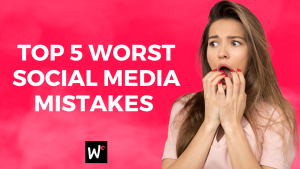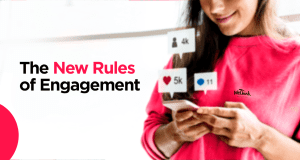In a few months the year 2019 will end, so we are taking this opportunity to take a look back at what happened and make informed predictions of the months to come, based on 2019’s algorithm changes.
2020 is poised for social media networks to regain the trust of their users.
That year is also very good for more special brand positioning campaigns. A direct result of more advertisers on social media platforms is higher advertising costs, which is why we should expect to see more money invested in paid campaigns and more growth in the influencer marketing sectors.
Let’s check some trends that will continue to grow.
1. Private groups and accounts
Facebook invested new features into Facebook Groups, such as being able to participate as a business Page, updating with Stories, posting Live videos within the group and creating social learning units.
Groups took off in 2018 as a way for brands to directly connect with fans without the algorithm affecting their posts. They’ve been used not only to get quick feedback about products but also as an additional engagement tool.
Some influencer accounts have turned to creating private Instagram accounts to avoid the Instagram algorithm. Brands also followed suit by creating private alternative accounts to drive up interest. In an article in the Atlantic, Sonny, who runs several meme accounts on Instagram, said he flipped four of his accounts to private. The return has been tremendous, noting that the “growth on those accounts has far outpaced anything he’s been able to get from making it on Instagram Explore.”
With the Close Friends feature in Instagram Stories, brands can choose to create a more “insider look” feature for their accounts. New Stories features will likely include more friend groups, similar to Facebook’s own Friend Lists.
This is the year to take advantage of this through private groups and accounts.
2. Conversational commerce
2017 and 2018 were hot years for the chatbot.
Of 1,000 trending B2B companies 0.5% have a chatbot, but because the technology is still so new and companies have been slow to adopt it, personal communication is still valued by consumers. As chatbots develop to go beyond simple prompts and adopt customer interactions in a more natural way, they might have the advantage in the current market.
So whether you’re getting a new chatbot set up for your brand or expanding a current one’s capabilities, jump in on personalized commerce the old-fashioned way: remembering your customers’ preferences and history. The conversational commerce trend means that consumers want that personalized interaction with brands. Take the time to interact with them without the selling propositions.
On Twitter or Facebook Messenger, this could mean something as little as remembering that they’ve purchased a shower curtain from you before and you following up on the purchase. These notes can be easily maintained in Sprout.
Chatbots provide the ability to respond to customers’ most frequently asked questions in a very timely manner at any time of day.
3. New social media networks
Facebook has had a long reign at the top of the social media charts but some users have quit Facebook altogether, which leaves marketers wondering what’s next for social media. It is the perfect time for a new network to be built with transparent data practice usage and their customers in mind. It’s best to keep an eye out for new channels in case one of them could be useful for your brand. WeThink’s recommendation is to reserve your brand handles on emerging social networks just in case a network becomes big in the future.
4. Stories
Snapchat’s features of a disappearing post infiltrated almost every major network, sometimes more than once. Instagram Stories received major updates in 2010 with AR filters and interactive stickers. Facebook added Stories to personal accounts, Pages, Messenger and Groups. Both WhatsApp and YouTube also invested in Story-like features.
As of May 2018, Stories across four platforms were approaching one billion uses every day. These snapshots have evolved from basic, behind-the-scenes features to branded storytelling snippets. Integration with shopping features will only increase in 2019 to appeal to brands.
There’s no sign of Stories stopping its rise, so it’s best to start incorporating it into your strategy if it isn’t there already.
5. Employees as influencers
Influencer marketing has become so bloated an industry that accounts are faking their partnerships so they can become actual influencers. More time and money will be spent on influencer marketing in the remaining months of 2019, but not in the way you think. A chunk of it will go into deeply researching accounts and double checking that the brand partnerships they’ve posted are actually real.
Because of this, employee advocacy will rise up as the next level of influence. Encouraging your employees to talk about your brand will help brand awareness even more.
Get ahead of this trend by examining your own internal communications and amplification procedures. What can you do better to allow for a more seamless employee sharing experience on social media?
It’s fun to take a guess at what the next year will bring for social media. The remaining months of 2019 will only bring more new, interesting features that we hope will drive the social conversation forward for brands. The trust relationship between brands and consumers will be rebuilt through private groups, transparency reports and employees as influencers.






